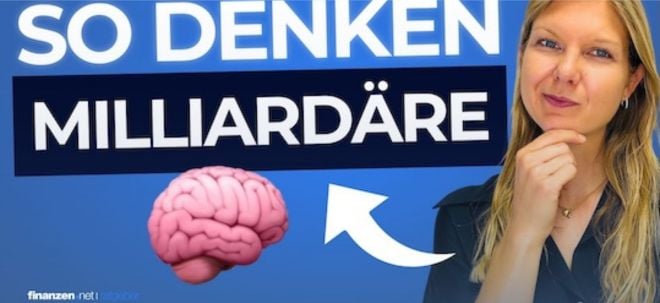Hi Jack,
mach einen auf hinter der richtigen WKn:
barrons artikel von vor paar wochen:
This Laser Maker’s Stock Is Cheap. Why It’s a Buy.
By Nicholas Jasinski
Updated April 11, 2021 / Original April 9, 2021
Order Reprints
Print Article
BARRON'S NEWSLETTERS
The Barron's Daily
A morning briefing on what you need to know in the day ahead, including exclusive commentary from Barron's and MarketWatch writers.
Enter your email address
SIGN UP
Text size
II-VI’s laser-based products include 3-D sensing chips, shown on the wafer above. They allow an Apple iPhone to recognize a user’s face or help a self-driving car avoid obstacles.
Courtesy of II-VI
For decades, the laser industry has been a fragmented collection of small players. There was, in fact, no laser-like focus. But a wave of mergers is changing the dynamic, creating long-term opportunities for investors.
For now, though, investors don’t know how to account for it all. Industry leader II-VI (ticker: IIVI) recently earned the winning bid for optical component maker Coherent (COHR). Rival offers from competitors Lumentum (LITE) and MKS Instruments (MKSI) forced II-VI to raise its offer several times and ultimately pay about $7 billion in cash and stock. II-VI’s stock dropped from a high of nearly $100 to the mid-$60s when the bidding war came to a close.
That was an overreaction, and II-VI stock has rebounded to about $76 in recent days. But there’s even more compelling value in the combination of II-VI and Coherent than the market is crediting. The stock should regain the $100 level and continue moving higher from there.
MORE READING
Stocks Edge Lower Ahead of Earnings Season
Congress to Resume Discussing Biden’s Infrastructure Plan
What Investors Are Eyeing as Earnings Season Kicks Off This Week
The tie-up is just the latest move in a wave of laser consolidation, following II-VI’s acquisition of Finisar in 2019 and Lumentum’s takeover of Oclaro in 2018. All of II-VI’s products are in photonics, or the science of light, for a wide range of applications. They include 3-D sensing technologies known as VCSEL and Lidar, which allow an Apple iPhone to recognize a user’s face and help a self-driving car avoid obstacles. The companies also supply key components used in data centers and fiberoptic telecom networks, as well as industrial cutting lasers, reminiscent of the weapon that supervillain Auric Goldfinger used on agent 007—“No, Mr. Bond, I expect you to die!” II-VI’s lasers are also used for actual weapon systems, including missile targeting.
Despite the recent turbulence for the stocks, industry consolidation is making the core players into more-diversified businesses better able to protect and develop their highly technical intellectual property. Increased scale also gives II-VI and Lumentum greater bargaining power with a concentrated group of customers. Apple (AAPL), Nokia (NOK), Cisco Systems (CSCO), Huawei, and Samsung Electronics (SSNLF) make up a critical mass of the industry’s customers.
Pennsylvania-based II-VI will fork over $220 in cash and 0.91 of its own shares for each Coherent share. The combination will nearly double the size of II-VI, which recently had a market value of about $8 billion. (As of now II-VI remains in the small-cap Russell 2000 index.) Its name, pronounced “two six,” refers to two groups in the periodic table used to make many of its laser products.
Adding Coherent will give II-VI greater exposure to end markets like life sciences, semiconductor capital equipment, and advanced laser-welding applications.
The deal is straight out of the company’s time-tested playbook. II-VI has completed some two-dozen mergers and acquisitions over the past 20 years, from small tuck-ins to the Finisar deal.
CEO Chuck Mattera, who holds a doctorate in chemistry, came to II-VI as a board member in 2000 after a 25 year career at Bell Laboratories and Alcatel-Lucent. Since then, II-VI has grown from about $150 million in annual revenue to an estimated $3 billion for this fiscal year, which ends in June.
“Acquisitions are a part of our strategy,” says Mattera, who took over the top job in 2016. “Putting together these two companies creates a global leader in photonics and complements our underlying capabilities. We believe that there’s just a tremendous and compelling opportunity that the combined companies will be uniquely positioned to pursue.”
II-VI and Coherent had combined sales of over $4 billion in 2020. The deal is scheduled to close by the end of this year, pending regulatory approval in the U.S. and China, which are home to the majority of II-VI’s employees and manufacturing facilities. Management expects the merger to eventually save $250 million a year in expenses—more than 6% of combined 2020 revenues—and to boost earnings per share in year two.
Most of II-VI’s and Coherent’s end markets are growing, as smartphones, cars, and trucks get more complex, fiber-intensive 5G networks are rolled out across the globe, and the digital world continues to migrate to the cloud. Wall Street analysts estimate 30% sales growth for stand-alone II-VI in pandemic-boosted fiscal 2021, followed by 10% growth next fiscal year. Coherent is seen growing revenues by about 15% in its fiscal 2021 and 2022, which end in September.
A more diversified portfolio should better insulate II-VI from the ups and downs of its customers. No single industry will represent more than 50% of the combined company’s sales, and investors may reward the shares with a higher valuation multiple as a result; II-VI stock trades for about 18 times estimated earnings over the coming year.
The average price target on II-VI stock is $106, or some 40% above current levels, with 75% of analysts rating the stock at Buy, according to FactSet.
The II-VI/Coherent deal also has a vote of confidence from private-equity firm Bain Capital, which took the unconventional step of purchasing at least $1.8 billion of equity in the combined company. Bain’s co-chairman, Steve Pagliuca, will also join II-VI’s board of directors.
Bain’s investment reduces II-VI’s required borrowing, with net debt of $4.9 billion anticipated at closing. That’s a manageable 3.8 times the combined company’s earnings before interest, taxes, depreciation, and amortization, or Ebitda. II-VI aims to get below three times within two years.
The market was too quick to dismiss the logic of a II-VI/Coherent tie-up. Investors now get a second swing at the shares. |


 Thread abonnieren
Thread abonnieren

